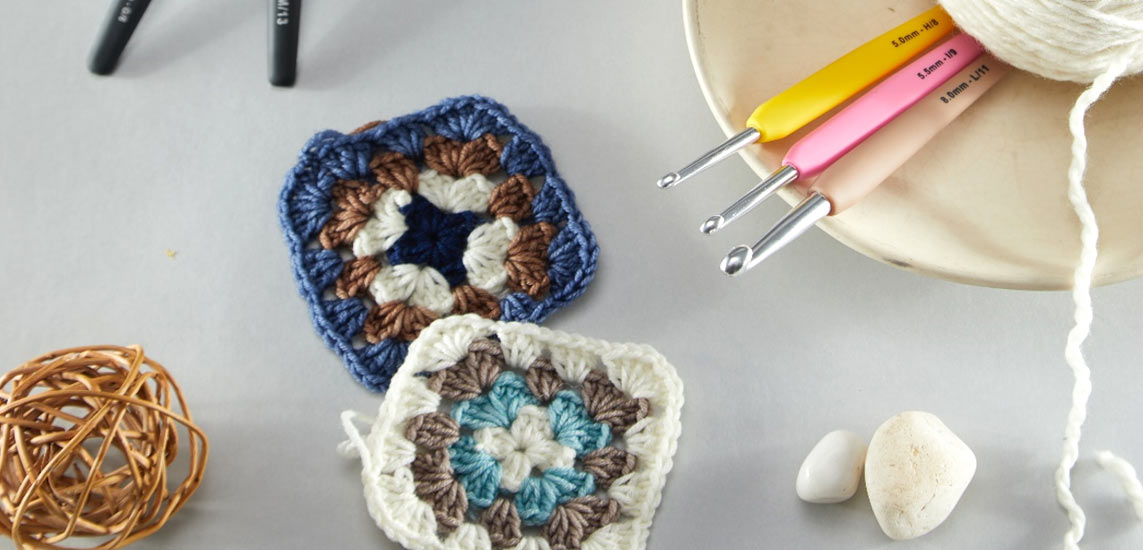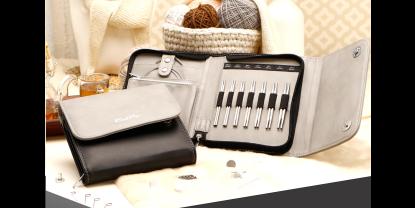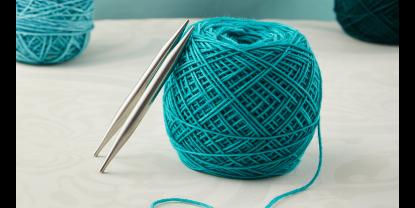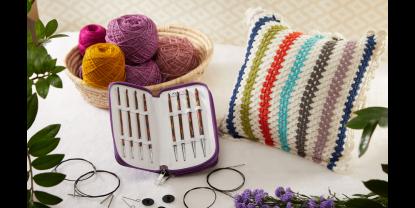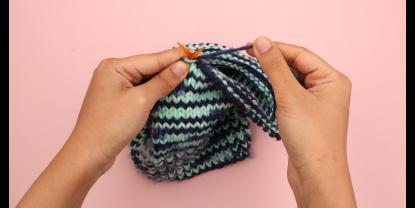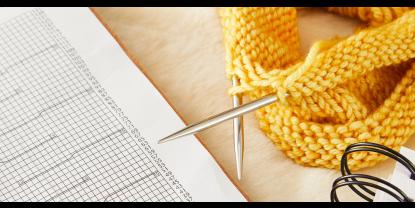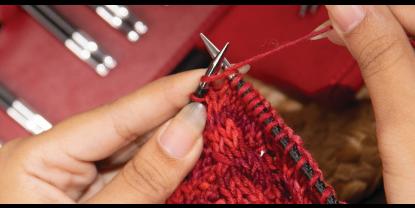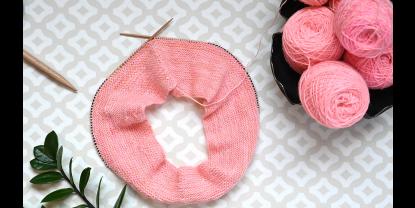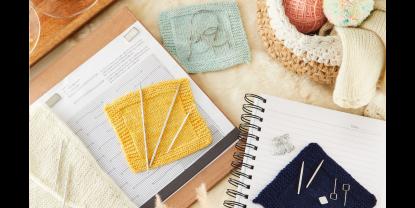Do you think you cannot learn how to crochet because you are left-handed? Think again because a world of loops, stitches, and patterns is waiting for you to explore and make your own.
However, while the basic crochet techniques and stitches are universally the same, the experience can differ significantly between left- and right-handed crafters. But if your brain is hard-wired for left-handedness, you should be able to master the twists and turns of left-handed crochet without breaking a sweat. This blog celebrates the inclusivity of crochet, unraveling how everyone, regardless of their dominant hand, can pick up a single-ended crochet hook and start stitching.
How to learn crochet as a left-handed crafter?
Crocheting, in many ways, can be more straightforward for left-handers to pick up compared to knitting. This is largely because crocheting typically involves using a single hook, which can be more easily adapted to left-handed techniques.
Perhaps the most notable differences between right- and left-handed crochet lies in the direction in which left- and right-handed people crochet.
Right-Handed vs. Left-Handed Crocheting:
|
Activity |
Right-Handed Crocheting |
Left-Handed Crocheting |
|
Yarn Holding |
Yarn held in left hand |
Yarn held in right hand |
|
Hook Holding |
Hook held in right hand |
Hook held in left hand |
|
Direction of Work |
Works right-side rows from right to left |
Works right-side rows from left to right |
|
Reading Patterns |
Follows patterns as written |
Needs to reverse/mirror directions |
|
Circular Crochet |
Works in a clockwise direction |
Works in a counterclockwise direction
|
Our tips for left-handed crocheting using a single-ended hook:
- when learning new stitches, look for crochet patterns specifically for left-handers. The patterns show techniques and stitches from a left-hander's perspective, making reproducing them more accessible.
- Mirror Techniques: If using a right-handed tutorial, mirror the techniques shown. This can mean sitting in front of a mirror while reproducing a pattern or mentally flipping the instructions.
- Use different crochet hooks: While most crochet hooks are designed to be used by left- or right-handed people, some special ergonomic crochet hooks might be more comfortable for left-handed people. Some crochet hooks are designed with ergonomic handles shaped to fit more comfortably in the left hand. Experimenting with different shapes to find the most comfortable hand position is always good.
Choosing the best crochet hook as a left-handed crafter
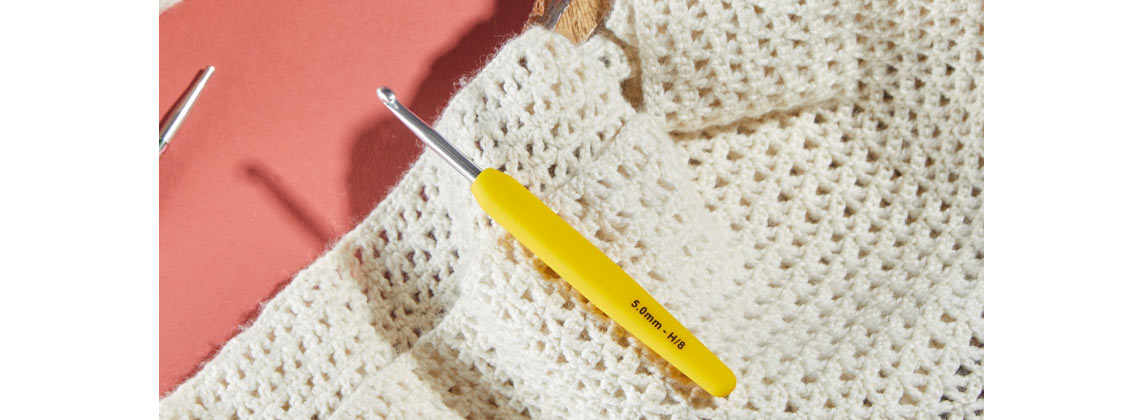
The design of a standard crochet hook is universal and ambidextrous, allowing both left- and right-handed people to use them comfortably. However, many left-handed crafters find certain angles or shapes of the hook head easier to maneuver.
Chart: Different Crochet Hook Styles
|
Hook Style |
Description |
Features |
Best Use |
|
Head, throat, and shaft in straight line; rounded point; deeper throat |
Consistent loop sizes; preferred for tighter stitches |
Sometimes challenging to insert into stitches |
|
|
Pointed tip; throat gently tapers into the shaft |
Easier to insert into tight stitches; comfortable for rapid movements |
Ideal for various stitch types and rapid crocheting |
|
|
Round Hook |
Rounded point; deep, rounded throat |
Suited for specialty yarns and stitches |
Less common, but valuable for specialty projects |
|
Sharp point; designed for precision |
Easier to work into tight or intricate stitches |
Great for lace crochet and detailed work |
|
|
Hybrid Hook |
Mix of inline and tapered styles; pronounced point with a deep throat |
Versatile; combines benefits of both inline and tapered designs |
Suitable for a large range of crochet projects |
The choice of your crochet hook shape largely depends on your personal preference as a left-handed crafter. The main difference for left-handed crochet hooks, if any, would be in the handle's ergonomic design for a more comfortable grip. The functional part of the hook, which is used to catch and loop the yarn, remains the same in both left- and right-handed hooks.
Yarn Hold and Tension Tips for Left-Handed Crocheters
Mastering the art of crochet as a left-handed beginner involves learning the stitches and understanding how to hold the yarn and maintain tension. These crucial elements significantly impact the consistency of your crochet work. Here are some tips tailored explicitly for left-handed beginners to help them develop a comfortable and practical yarn hold and tension control.
How to hold the yarn
As a left-handed crocheter, you will typically hold the crochet hook in your left hand and the yarn in your right hand. The way you wrap the yarn around your fingers can affect your tension control.
Experiment with different ways of wrapping the yarn around your fingers. Some crafters wrap it just once around the index finger, others around the pinky finger. You can also wrap the thread around the pinky finger, then over the ring finger, under the middle finger, and the index finger. This way, you gain control over the yarn tension with all fingers of your right hand.
What is Yarn Tension?
Yarn tension refers to how tightly or loosely the yarn is held while crocheting. Consistent tension is crucial for creating uniform stitches. For left-handed crocheters, tension control might require some unique adjustments.
Troubleshooting Tension Issues
A common issue for beginners is gripping the hook or yarn too tightly. Try to relax your hands to avoid strain and to allow the yarn to flow freely. Remember that different yarn textures and weights may require adjustments in your grip and tension. Thicker yarns might need a looser grip, while thinner yarns may require a tighter hold.
➧ Stitches too tight: try loosening your grip on the yarn or hook, or wrap the yarn fewer times around your fingers.
➧ Stitches too loose: wrap the yarn an additional time around an additional finger or hold the yarn and hook more firmly.
The beauty of crocheting is in its flexibility and inclusivity. So, to all the lefties out there picking up a crochet hook for the first time, celebrate your left-handedness! KnitPro recognizes this diversity in crafters' needs and preferences, offering ergonomic, inline, and tapered single-ended crochet hooks, ensuring everyone can find their perfect tool. Because, in the end, there's no 'right' left way to crochet—only your way.




